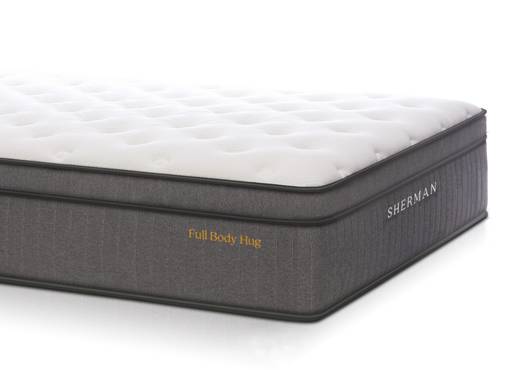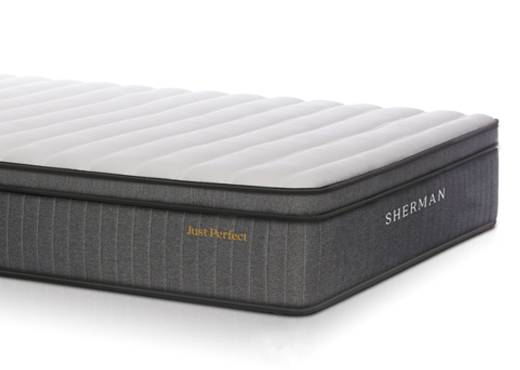All mattresses are made up a foundation layer, which is primarily responsible for the support in a mattress and the comfort layers, mostly responsible for the (you guessed it) comfort in a mattress.
There are two types of mattresses found in Australia – the innerspring style or a solid foam style (we’ve left out waterbeds because these are not technically mattresses).
You may be thinking "what about mattresses that come in a box"? We put this style of mattress into the Solid Foam category, as we'll explain a little further down.
Innerspring
The most traditional style of mattress (and the one that we favour) where the mattress foundation is an innerspring unit and the comfort layers are foam. There are many different types of innerspring units (see our article here for everything you need to know about mattress spring units) and many different types of foams used in the comfort layers (see our article that explains mattress foams here.)
Solid Foam
Where a mattress is constructed entirely of foam, the foundation layer is usually a firmer, lower-cost foam and the comfort layers are more premium foams, such as latex or memory foam. An example of this style of mattress is a Tempur mattress.
When a solid foam mattress doesn't feature a layer of memory foam for softness, the general consensus is that the mattress feels quite firm and un-responsive. An example of this style of mattress is a Koala mattress that comes compressed and rolled up in a box.
Hybrid
A term used by many bedding marketers to make the product sound sexy or high-tech, but the reality is that these are just solid foam mattresses with springs inserted somewhere inside the foam.
It's important to understand that these springs are not considered to be a spring 'unit', but a floppy layer of little pocket springs joined together with thin fabric. You don't need to be an engineer to understand that springs layered on top of foam don't perform the job that they are intended for - if you apply any force to the spring, it will push into the foam. So these springs are not for support, but rather to add comfort.
Mattress-in-a-box
Popular with the online mattress stores because of the ease and lower cost to ship across the country, technically these mattresses belong to the Solid Foam type of mattress (as above).
The only way to construct a mattress that can be compressed, shrink-wrapped in plastic and then rolled to go into a box, is to construct it as a solid slab of foam or a box of foam. So, even when a mattress-in-a-box contains springs (and these are often labelled as "Hybrids"), these are always layers of pocket springs or microcoils with very little structural integrity. However, when these are added to a mattress-in-a-box, they can certainly increase the comfort in this style of mattress. But these layers of springs found in a mattress-in-a-box are definitely not there for support.
This is our biggest issue with any mattress that can be rolled up – lack of structure and edge support, and very little spinal support. They can be extremely comfy at first, but often have a short life-span and may end up causing you some problems with your back.
Almost all of the mattress-in-a-box products feel quite firm and, as with some of the solid style of foam mattress above, the comment that we hear from people when they describe the feel of this style of mattress is a "dead" firmness, meaning that the mattress is not very responsive.
There are a few mattress review sites based in USA that show what a mattress in a box looks like when unpacked, these are great to watch to learn the reality behind these products. You'll even find Youtube videos of some of these products when opened up. These are worth a look before you purchase any type of mattress.
Go back to article: "What's the best mattress?"




